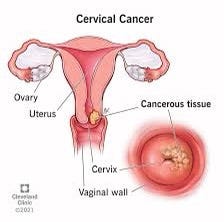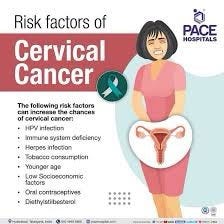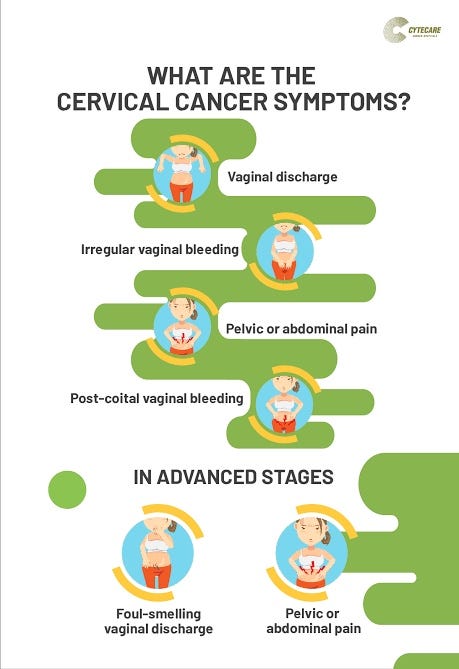- “Empowering Emergency Medicine Physicians”
- “Queue Management Software and Hospitalists in Modern Healthcare”
- “Enhancing-Pediatric-Infectious-Disease-Care”
- “Revolutionizing-Geriatric-Care”
- “Optimizing-Patient-Care-in-Pediatric-Rheumatology”
- “Pediatric-Pulmonology-Care”
- “Revolutionizing-Pediatric-Gastroenterology”
- “Enhancing-Pediatric-Neurology-Care”
- “Optimizing-Pediatric-Cardiology”
- “Enhancing-Pediatric-Endocrinology-Care”
- “Empowering-Neonatologists-with-EMR-Software”
- “Pediatrics-in-Focus”
- “Empowering-Neurologists-with-Electronic-Prescriptions”
- “Streamlining-Dermatology-Practice”
- “Streamlining-Psychiatry-Practice”
- “A-Game-Changer-for-Infectious-Disease-Specialists”
- “Allergist/Immunologist-Practices-with-QME-EMR-and-Hospital-Management-Systems”
- “Empowering-Hematologists-and-Revolutionizing-Healthcare-Management”
- “Optimizing-Healthcare-with-HMIS”
- “Transforming-Healthcare-with-Endocrinologist”
- “Healthcare-Management-with-QMe-EMR-for-Nephrologists”
- “Revolutionizing-Healthcare-Management-with-Cardiologist”
- “Streamlining-Operations-with-Queue-Management-Software”
- “Optimizing-Healthcare-Delivery”
- “Transforming-Healthcare-Management”
- HMIS And Decision Support Systems
- Dengue Unveiled: An Overview of Causes, Symptoms, and Prevention.
- Dengue Fever: Unraveling the Mosquito-Borne Menace.
- HMIS-and-Continuity-of-Care
- Project-Management-for-Successful-HMIS
- Catalysts of Wellness: The Transformative Power of Diagnosis and Screening in Healthcare
- Patient-Data-Management
- Guardians of Healthcare: The Vital Role of Fraud Detection in Ensuring Ethical Care
- Unlocking Insights
- Healthcare in the Digital Age: The History Of Development Of HMIS
- Transforming Healthcare
- Safeguarding-HMIS-Data
- HMIS-Integration-Challenges
- ANXIETY UNVEILED: CONQUERING FEARS AND CULTIVATING CALM.
- BEYOND THE BLUE: EMBRACING LIGHT ON THE PATH OF DEPRESSION.
- BEYOND THE BLUE: EMBRACING LIGHT ON THE PATH OF DEPRESSION.
- HMIS and Resource Allocation
- HMIS Data Accuracy and Integrity
- SOOTHING THE SILENT PAIN: UNDERSTANDING VULVODYNIA.
- Impact of HMIS on OPD Operations
- In Patient Management Through Health Management
- WITHIN THE SHADOWS: UNDERSTANDING BRAIN TUMOURS FROM WITHIN
- HMIS-and-Health-Insurance-Integration
- HMIS-Data-Analytics-for-Preventive-Care
- SILENT INTRUDERS: UNRAVELLING THE MYSTERIES OF PELVIC INFLAMMATORY DISEASE
- BREAKING FREE: OVERCOMING THE HURDLE OF URINARY INCONTINENCE
- “HMIS and Doctor-Patient Communication”
- HEALING INSIGHTS: THE POWER OF THE HOSPITAL MANAGEMENT INFORMATION SYSTEM.
- SOLVING THE OVARIAN PUZZLE:UNDERSTANDING OVARIAN CYST INSIDE OUT
- Usability And User Experience In HMIS
- WARRIOR’S BATTLE: TRIUMPHING OVER UTERINE CANCER
- POLYCYSTIC OVARY PUZZLE: UNRAVELLING THE ENIGMA OF PCOS
- Unlocking-the-Potential-of-HMIS-Data-for Medical-Research-and-Healthcare-Policy-Enhancement
- Feminine Health Unplugged: Empowering Women in Vaginal Infection Awareness
- Revitalizing Feminine Comfort: A Journey Through Vaginal Wellness.
- HMIS Vendor Selection Guide
- UNDERSTANDING FIBROIDS: NAVIGATING THE INTRICACIES OF UTERINE HEALTH.
- Best Practices for Data Migration in Healthcare Management Information Systems (HMIS)
- CONCEIVING HOPE: NAVIGATING THE JOURNEY OF INFERTILITY
- MENSTRUAL IRREGULARITIES: CAUSES AND TREATMENT
- RISING ABOVE: EMPOWERING WOMEN WITH PELVIC ORGAN PROLAPSE
- Leveraging HMIS for Enhanced Public Health Management and Disease Surveillance
- Challenges and Benefits of Implementing HMIS in Rural and Remote Healthcare Settings
- Securing Healthcare Continuity
- Pancreatic Cancer
- Lymphoma
- Leukemia
- Bladder Cancer
- Skin Cancer (Melanoma)
- COLORECTAL CANCER
- All about Prostate Cancer
- Fighting out the Disease of Lung Cancer
- Advances in Breast Cancer Treatment: A Comprehensive Guide
- Autism Spectrum Disorder (ASD)
- EHR SYMPHONY: HARMONIZING HEALTHCARE THROUGH ELECTRONIC RECORDS .
- Understanding Testicular Cancer: Detection, Treatment And Awareness.
- Childhood Obesity
- Kawasaki Disease
- Eczema (Atopic Dermatitis)
- Understanding Bone Cancer: A Brief Overview.
- Virtual Healing: Navigating Healthcare Through Telemedicine and Telehealth.
- Attention-Deficit/Hyperactivity Disorder (ADHD)
- PELVIC PAIN:CAUSES SYMPTOMS AND PREVENTIONS
- Type 1 Diabetes: Causes, Symptoms, and Treatment
- Gastroesophageal Reflux Disease (GERD)
- Battling Pneumonia: Unveiling the Stealthy Invader of the Lungs
- Unravelling the Complexity of Allergic Reactions: Understanding, Managing, and Thriving
- Rashes (Eczema, Dermatitis)
- Chicken Pox
- Endometriosis Unmasked: A Closer Look at the Silent Struggle
- Croup
- Hand, Foot and Mouth Disease (HFMD)
- THE DAWNING OF A NEW ERA: EMBRACING THE JOURNEY OF MENOPAUSE
- Urinary Tract Infections (UTIs)
- Strep Throat (Streptococcal Pharyngitis)
- Understanding Otitis Media(Ear Infection)
- 28th July In medical history!!
- Influenza (Flu) - Symptoms, Prevention and Management
- 27th July In medical history!!
- Respiratory Syncytial Virus (RSV) Infection
- SIGNIFICANCE AND ADVANTAGES OF HMIS: A DETAILED ANALYSIS
- Beyond Boundaries: Transforming Healthcare with Virtual Reality
- TRACK YOUR LIFE : A DETAILED UNDERSTANDING ON HEALTH MONITORING SYSTEM
- EXPLORING BENEATH THE SURFACE: UNDERSTANDING BARTHOLIN CYSTS AND ABSCESSES
- GUARDING GUT HEALTH: YOUR GUIDE TO POTENTIAL CROHN’S DISEASE PREVENTION.
- PATHWAYS OF HOPE: NAVIGATING THE CHALLENGES OF ESOPHAGEAL CANCER
- Gastric Battles: Confronting Stomach Cancer Head-On.
- HMIS IN SMALL CLINICS: A STEP TO A BETTER FUTURE
- Harmonizing Your Cycle: A Journey to Menstrual Health and Balance.
- Respiratory Syncytial Virus (RSV) Infection
- GUARDING OUR INTIMATE WORLD: A CLOSER LOOK AT STI
- Real-World HMIS Implementation Case Studies: Using Data to Transform Healthcare
- Gastroenteritis (Stomach Flu)
- Asthama - The Anatomy Of Breathing
- Influenza - A Silent Intruder
- Breast Cancer
UNDERSTANDING CERVICAL DYSPLASIA: CAUSES, SYMPTOMS AND MANAGEMENT
UNDERSTANDING CERVICAL DYSPLASIA: CAUSES, SYMPTOMS AND MANAGEMENT.

Cervical dysplasia is a condition where some cells on the cervix (the lower part of the uterus) look abnormal. It is usually detected during a routine test called a Pap smear or cervical screening. The abnormal changes are caused by a virus called HPV, which is usually spread through sexual contact. It is considered a pre-cancerous condition, meaning it can lead to cervical cancer if not treated. However, not all cases progress to cancer.
Cervical intraepithelial neoplasia (CIN) is classified on a scale from one to three.
- CIN 1: Refers to abnormal cells affecting about one-third of the thickness of the epithelium.
- CIN 2: Refers to abnormal cells affecting about one-third to two-thirds of the epithelium.CIN 3: Refers to abnormal cells affecting more than two-thirds of the epithelium.
It should be noted that, CIN 1 cervical dysplasia rarely becomes cancer and often goes away on its own. CIN 2 and 3 are more likely to require treatment to prevent cancer.
DELVING INTO THE CAUSES OF CERVICAL DYSPLASIA

Cervical dysplasia is primarily caused by infection with certain types of the human papillomavirus (HPV). HPV is a common sexually transmitted infection, and some high-risk types of HPV can lead to abnormal changes in the cells of the cervix, leading to dysplasia.
Other risk factors that may contribute to the development of cervical dysplasia include:
-
Early Sexual Activity: Engaging in sexual activity at a young age increases the risk of exposure to HPV.
-
- Multiple Sexual Partners: Having multiple sexual partners can increase the likelihood of encountering HPV.
-
Weakened Immune System:A weakened immune system may have difficulty clearing the HPV infection, leading to the progression of cervical dysplasia.
-
Smoking:Smoking has been associated with an increased risk of cervical dysplasia and cervical cancer.
-
History of HPV or Dysplasia:A previous history of HPV infection or cervical dysplasia increases the risk of developing it again.
-
Lack of Regular Screenings:Not having regular Pap smears or cervical screenings can delay the detection and treatment of cervical dysplasia.
It’s important to note that not everyone infected with high-risk HPV will develop cervical dysplasia. Many HPV infections clear up on their own without causing any significant health issues. However, persistent infection with high-risk HPV can increase the risk of cervical dysplasia and, in some cases, progress to cervical cancer if left untreated.
SPOTTING THE SIGNS: SYMPTOMS AND INDICATIONS OF CERVICAL DYSPLASIA.

Early detection and proper management are vital for preventing the progression of cervical dysplasia to cervical cancer.
Certainly! Here are more detailed explanations of the symptoms of cervical dysplasia:
-
Abnormal Bleeding:One of the most common signs of cervical dysplasia is abnormal vaginal bleeding. This may include bleeding between menstrual periods, after sexual intercourse (postcoital bleeding), or after menopause when a woman is no longer having periods.
-
Unusual Vaginal Discharge:Cervical dysplasia can sometimes cause changes in vaginal discharge. You may notice an increase in the amount of discharge, and it may have an unusual appearance, such as being watery, thick, or tinged with blood.
-
Pelvic Pain: While not as common, some women with cervical dysplasia may experience mild pelvic discomfort or pain. However, it’s essential to remember that pelvic pain can have various causes, and cervical dysplasia is just one possibility.
It’s important to highlight that cervical dysplasia usually does not cause noticeable symptoms on its own. In many cases, it is detected during routine cervical screenings, such as Pap smears or HPV testing, before any symptoms develop. Routine screenings are vital because cervical dysplasia is a pre-cancerous condition, and early detection and proper management can help prevent it from progressing to cervical cancer.
Regular cervical screenings are essential for maintaining good reproductive health and preventing serious conditions like cervical dysplasia and cervical cancer. QMe’s automatic workflows streamline administrative tasks and treatment plans, enhancing overall efficiency and reducing human errors. The software’s IPD management feature enables smooth inpatient care coordination, while its TPA support simplifies insurance processes. Additionally, QMe offers packages support for various medical services and features automated billing to ensure transparent and hassle-free financial transactions. Embracing QMe empowers hospitals to enhance patient experiences, optimize healthcare workflows, and deliver top-notch medical services.
EFFECTIVE TREATMENT APPROACHES

The treatment for cervical dysplasia depends on the severity of the condition and other individual factors. Here are some common treatment options:
-
Watchful Waiting: If the dysplasia is mild (CIN 1) and not causing significant concern, the doctor may choose to monitor the condition closely without immediate treatment, as it can often resolve on its own.
-
Excisional Procedures: For moderate to severe dysplasia (CIN 2 and CIN 3), the abnormal cells may be removed through various excisional procedures, such as Loop Electrosurgical Excision Procedure (LEEP), Cone Biopsy, or Cold Knife Cone Biopsy. These procedures remove a cone-shaped piece of tissue from the cervix to eliminate the abnormal cells.
-
Cryotherapy: This involves freezing the abnormal cervical tissue to destroy the dysplastic cells.
-
Laser Therapy: Using a laser to remove or destroy the abnormal cells.
-
Electrocautery: Using an electric current to remove the abnormal tissue.
-
Hysterectomy: In severe cases where dysplasia is widespread and other treatments are ineffective, a hysterectomy ( removal of the uterus) may be recommended.
7- Vaccination : Vaccination against HPV can significantly reduce the risk of acquiring high-risk HPV infections and subsequently developing cervical dysplasia and cervical cancer. Regular cervical screenings are also essential for early detection and timely management of cervical dysplasia.
Treatment for cervical dysplasia depends on its severity and may include removing the abnormal cells. Regular Pap smears and getting vaccinated against HPV can help detect and prevent cervical dysplasia and cervical cancer. If you have concerns, talk to your healthcare provider for advice and proper care. QMe is a cutting-edge hospital management software designed to revolutionize healthcare facilities worldwide. With its intelligent queue-based OPD management system, patients experience reduced waiting times and optimized appointment scheduling. The software’s comprehensive patient history and electronic health records ensure seamless access to critical medical information, enabling healthcare professionals to make informed decisions and provide personalized care. QMe’s automatic workflows streamline administrative tasks and treatment plans, enhancing overall efficiency and reducing human errors.
HOW COMMON IS CERVICAL DYSPLASIA?

About 250,000 to 1 million cisgender women in the U.S. get diagnosed with cervical dysplasia each year. The condition occurs most often among women of childbearing age, particularly aged 25 to 35.
With age-standardised incidence and mortality rates of 22 and 12.4 per 100,000 women per year, cervical cancer is the second leading cause of cancer deaths among women in India. Twenty-five percent of all global deaths due to cervical cancer occur in India. The reason for this difference is lack of effective screening and access to timely treatment.
The overall 5-year relative survival of 46% for all cervical cancers in India is strongly determined by the stage at diagnosis, with survival as low as 7·4% for advanced stage disease compared with 73·2% for localised cancer.
PREVENTATIVE MEASURES-
Preventing cervical dysplasia involves several key strategies, which primarily focus on reducing the risk of human papillomavirus (HPV) infection and promoting regular cervical screenings. Here are some essential prevention measures:
-
HPV Vaccination: The HPV vaccine is a highly effective way to prevent infection with the high-risk HPV types that can lead to cervical dysplasia and cervical cancer. The vaccine is recommended for both males and females, ideally before they become sexually active.
-
Safe Sexual Practices: Practicing safe sex, such as using condoms consistently and correctly, can help reduce the risk of HPV and other sexually transmitted infections.
-
Limiting Sexual Partners: Reducing the number of sexual partners can lower the chances of encountering HPV and other sexually transmitted infections.
-
Cervical Screenings: Regular cervical screenings, such as Pap smears and HPV tests, are crucial for early detection of cervical dysplasia. Follow the recommended screening guidelines based on your age and health history.
-
Avoiding Smoking:Smoking is associated with an increased risk of cervical dysplasia and cervical cancer. Quitting smoking can help reduce this risk.
-
Maintaining a Healthy Lifestyle: A healthy diet, regular exercise, and proper stress management can contribute to a strong immune system, which can help fight off HPV infections.
-
Educating Yourself and Others: Educate yourself and others about cervical dysplasia, HPV, and the importance of preventive measures and regular screenings to prevent it in the future.
CONCLUSION

In conclusion, cervical dysplasia is a pre-cancerous condition characterized by abnormal changes in the cells of the cervix. It is primarily caused by infection with certain types of the human papillomavirus (HPV). Cervical dysplasia usually does not produce noticeable symptoms, making regular cervical screenings, such as Pap smears and HPV tests, critical for early detection and timely treatment.
Early detection is crucial because cervical dysplasia can progress to cervical cancer if left untreated. Thankfully, there are effective treatment options available, including watchful waiting, excisional procedures, cryotherapy, and laser therapy, among others.
Education and awareness play vital roles in cervical dysplasia prevention. By understanding the importance of preventive measures and supporting public health initiatives, we can collectively work towards a healthier future for women’s reproductive health.
Ultimately, regular health check-ups and open communication with healthcare providers are crucial for promoting early detection, proper management, and overall well-being. Together, through preventive efforts and early intervention, we can make significant strides in reducing the burden of cervical dysplasia and safeguarding the health of women worldwide.
- “Empowering Emergency Medicine Physicians”
- “Queue Management Software and Hospitalists in Modern Healthcare”
- “Enhancing-Pediatric-Infectious-Disease-Care”
- “Revolutionizing-Geriatric-Care”
- “Optimizing-Patient-Care-in-Pediatric-Rheumatology”
- “Pediatric-Pulmonology-Care”
- “Revolutionizing-Pediatric-Gastroenterology”
- “Enhancing-Pediatric-Neurology-Care”
- “Optimizing-Pediatric-Cardiology”
- “Enhancing-Pediatric-Endocrinology-Care”
- “Empowering-Neonatologists-with-EMR-Software”
- “Pediatrics-in-Focus”
- “Empowering-Neurologists-with-Electronic-Prescriptions”
- “Streamlining-Dermatology-Practice”
- “Streamlining-Psychiatry-Practice”
- “A-Game-Changer-for-Infectious-Disease-Specialists”
- “Allergist/Immunologist-Practices-with-QME-EMR-and-Hospital-Management-Systems”
- “Empowering-Hematologists-and-Revolutionizing-Healthcare-Management”
- “Optimizing-Healthcare-with-HMIS”
- “Transforming-Healthcare-with-Endocrinologist”
- “Healthcare-Management-with-QMe-EMR-for-Nephrologists”
- “Revolutionizing-Healthcare-Management-with-Cardiologist”
- “Streamlining-Operations-with-Queue-Management-Software”
- “Optimizing-Healthcare-Delivery”
- “Transforming-Healthcare-Management”
- HMIS And Decision Support Systems
- Dengue Unveiled: An Overview of Causes, Symptoms, and Prevention.
- Dengue Fever: Unraveling the Mosquito-Borne Menace.
- HMIS-and-Continuity-of-Care
- Project-Management-for-Successful-HMIS
- Catalysts of Wellness: The Transformative Power of Diagnosis and Screening in Healthcare
- Patient-Data-Management
- Guardians of Healthcare: The Vital Role of Fraud Detection in Ensuring Ethical Care
- Unlocking Insights
- Healthcare in the Digital Age: The History Of Development Of HMIS
- Transforming Healthcare
- Safeguarding-HMIS-Data
- HMIS-Integration-Challenges
- ANXIETY UNVEILED: CONQUERING FEARS AND CULTIVATING CALM.
- BEYOND THE BLUE: EMBRACING LIGHT ON THE PATH OF DEPRESSION.
- BEYOND THE BLUE: EMBRACING LIGHT ON THE PATH OF DEPRESSION.
- HMIS and Resource Allocation
- HMIS Data Accuracy and Integrity
- SOOTHING THE SILENT PAIN: UNDERSTANDING VULVODYNIA.
- Impact of HMIS on OPD Operations
- In Patient Management Through Health Management
- WITHIN THE SHADOWS: UNDERSTANDING BRAIN TUMOURS FROM WITHIN
- HMIS-and-Health-Insurance-Integration
- HMIS-Data-Analytics-for-Preventive-Care
- SILENT INTRUDERS: UNRAVELLING THE MYSTERIES OF PELVIC INFLAMMATORY DISEASE
- BREAKING FREE: OVERCOMING THE HURDLE OF URINARY INCONTINENCE
- “HMIS and Doctor-Patient Communication”
- HEALING INSIGHTS: THE POWER OF THE HOSPITAL MANAGEMENT INFORMATION SYSTEM.
- SOLVING THE OVARIAN PUZZLE:UNDERSTANDING OVARIAN CYST INSIDE OUT
- Usability And User Experience In HMIS
- WARRIOR’S BATTLE: TRIUMPHING OVER UTERINE CANCER
- POLYCYSTIC OVARY PUZZLE: UNRAVELLING THE ENIGMA OF PCOS
- Unlocking-the-Potential-of-HMIS-Data-for Medical-Research-and-Healthcare-Policy-Enhancement
- Feminine Health Unplugged: Empowering Women in Vaginal Infection Awareness
- Revitalizing Feminine Comfort: A Journey Through Vaginal Wellness.
- HMIS Vendor Selection Guide
- UNDERSTANDING FIBROIDS: NAVIGATING THE INTRICACIES OF UTERINE HEALTH.
- Best Practices for Data Migration in Healthcare Management Information Systems (HMIS)
- CONCEIVING HOPE: NAVIGATING THE JOURNEY OF INFERTILITY
- MENSTRUAL IRREGULARITIES: CAUSES AND TREATMENT
- RISING ABOVE: EMPOWERING WOMEN WITH PELVIC ORGAN PROLAPSE
- Leveraging HMIS for Enhanced Public Health Management and Disease Surveillance
- Challenges and Benefits of Implementing HMIS in Rural and Remote Healthcare Settings
- Securing Healthcare Continuity
- Pancreatic Cancer
- Lymphoma
- Leukemia
- Bladder Cancer
- Skin Cancer (Melanoma)
- COLORECTAL CANCER
- All about Prostate Cancer
- Fighting out the Disease of Lung Cancer
- Advances in Breast Cancer Treatment: A Comprehensive Guide
- Autism Spectrum Disorder (ASD)
- EHR SYMPHONY: HARMONIZING HEALTHCARE THROUGH ELECTRONIC RECORDS .
- Understanding Testicular Cancer: Detection, Treatment And Awareness.
- Childhood Obesity
- Kawasaki Disease
- Eczema (Atopic Dermatitis)
- Understanding Bone Cancer: A Brief Overview.
- Virtual Healing: Navigating Healthcare Through Telemedicine and Telehealth.
- Attention-Deficit/Hyperactivity Disorder (ADHD)
- PELVIC PAIN:CAUSES SYMPTOMS AND PREVENTIONS
- Type 1 Diabetes: Causes, Symptoms, and Treatment
- Gastroesophageal Reflux Disease (GERD)
- Battling Pneumonia: Unveiling the Stealthy Invader of the Lungs
- Unravelling the Complexity of Allergic Reactions: Understanding, Managing, and Thriving
- Rashes (Eczema, Dermatitis)
- Chicken Pox
- Endometriosis Unmasked: A Closer Look at the Silent Struggle
- Croup
- Hand, Foot and Mouth Disease (HFMD)
- THE DAWNING OF A NEW ERA: EMBRACING THE JOURNEY OF MENOPAUSE
- Urinary Tract Infections (UTIs)
- Strep Throat (Streptococcal Pharyngitis)
- Understanding Otitis Media(Ear Infection)
- 28th July In medical history!!
- Influenza (Flu) - Symptoms, Prevention and Management
- 27th July In medical history!!
- Respiratory Syncytial Virus (RSV) Infection
- SIGNIFICANCE AND ADVANTAGES OF HMIS: A DETAILED ANALYSIS
- Beyond Boundaries: Transforming Healthcare with Virtual Reality
- TRACK YOUR LIFE : A DETAILED UNDERSTANDING ON HEALTH MONITORING SYSTEM
- EXPLORING BENEATH THE SURFACE: UNDERSTANDING BARTHOLIN CYSTS AND ABSCESSES
- GUARDING GUT HEALTH: YOUR GUIDE TO POTENTIAL CROHN’S DISEASE PREVENTION.
- PATHWAYS OF HOPE: NAVIGATING THE CHALLENGES OF ESOPHAGEAL CANCER
- Gastric Battles: Confronting Stomach Cancer Head-On.
- HMIS IN SMALL CLINICS: A STEP TO A BETTER FUTURE
- Harmonizing Your Cycle: A Journey to Menstrual Health and Balance.
- Respiratory Syncytial Virus (RSV) Infection
- GUARDING OUR INTIMATE WORLD: A CLOSER LOOK AT STI
- Real-World HMIS Implementation Case Studies: Using Data to Transform Healthcare
- Gastroenteritis (Stomach Flu)
- Asthama - The Anatomy Of Breathing
- Influenza - A Silent Intruder
- Breast Cancer